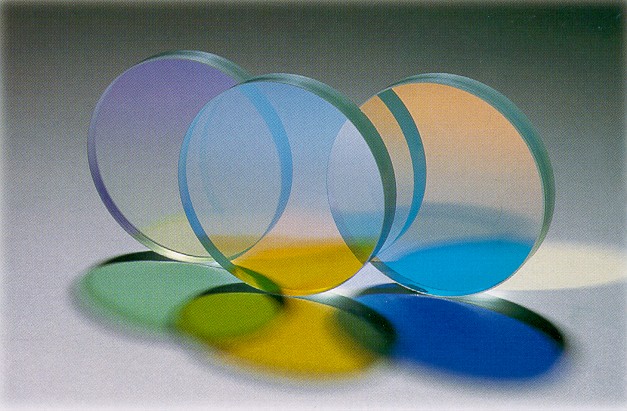|
Alatoconchidae
Alatoconchidae is an extinct family of prehistoric bivalves that lived in the early to middle Permian period. Genera belonging to Alatoconchidae are characterized by their shell that is strongly compressed in the dorsoventral direction. Some species reached large sizes of as much as long. It is hypothesized that some species in this family got energy from chemosynthetic bacteria. Occurrence Fossil records of Alatoconchidae are known from the early to middle Permian. They are found in shallow marine carbonates across widely separated areas, such as Croatia, Tunisia, Oman, Afghanistan, Iran, Thailand, Malaysia, Philippines, Japan, Alaska and South China. History In 1968, ''Shikamaia akasakaensis'' from Japan, named after palaeontologist Shikama Tokio, is described, but due to its unique shape and fragmentary fossil preservation, it was originally classified as Animalia ''incertae sedis''. The Alatoconchidae family was created in 1973, and included genus '' Alatoconcha''. ... [...More Info...] [...Related Items...] OR: [Wikipedia] [Google] [Baidu] |
Capitanian
In the geologic timescale, the Capitanian is an age or stage of the Permian. It is also the uppermost or latest of three subdivisions of the Guadalupian Epoch or Series. The Capitanian lasted between and million years ago. It was preceded by the Wordian and followed by the Wuchiapingian.; 2004: ''A Geologic Time Scale 2004'', Cambridge University Press A significant mass extinction event occurred at the end of this stage, which was associated with anoxia and acidification in the oceans and possibly caused by the volcanic eruptions that produced the Emeishan Traps. This extinction event may be related to the much larger Permian–Triassic extinction event that followed about 10 million years later. Stratigraphy The Capitanian Stage was introduced into scientific literature by George Burr Richardson in 1904. The name comes from the Capitan Reef in the Guadalupe Mountains (Texas, United States). The Capitanian was first used as a stratigraphic subdivision of the Guadal ... [...More Info...] [...Related Items...] OR: [Wikipedia] [Google] [Baidu] |
Artinskian
In the geologic timescale, the Artinskian is an age or stage of the Permian. It is a subdivision of the Cisuralian Epoch or Series. The Artinskian likely lasted between and million years ago (Ma) according to the most recent revision of the International Commission on Stratigraphy (ICS) in 2022. It was preceded by the Sakmarian and followed by the Kungurian. Stratigraphy The Artinskian is named after the small Russian city of Arti (formerly ''Artinsk''), situated in the southern Ural mountains, about 200 km southwest of Yekaterinburg. The stage was introduced into scientific literature by Alexander Karpinsky in 1874. Base of the Artinskian The base of the Artinskian Stage is defined as the first appearance datum (FAD) of the conodont species '' Sweetognathus whitei'' and '' Mesogondolella bisselli''. In order to constrain this age, the ICS subcommission on Permian stratigraphy informally proposed a candidate GSSP in 2002, later followed by a formal proposal i ... [...More Info...] [...Related Items...] OR: [Wikipedia] [Google] [Baidu] |
Wackestone
Under the Dunham classification (Dunham, 1962Dunham, R.J., 1962. Classification of carbonate rocks according to depositional texture. In: W.E. Ham (Ed.), Classification of Carbonate Rocks. American Association of Petroleum Geologists Memoir. American Association of Petroleum Geologists, Tulsa, Oklahoma, pp. 108–121.) system of limestones, a wackestone is defined as a mud-supported carbonate rock Carbonate rocks are a class of sedimentary rocks composed primarily of carbonate minerals. The two major types are limestone, which is composed of calcite or aragonite (different crystal forms of CaCO3), and dolomite rock (also known as doloston ... that contains greater than 10% grains. Most recently, this definition has been clarified as ''a carbonate-dominated rock in which the carbonate mud (2 mm)''. The identification of wackestone A study of the adoption and use of carbonate classification systems by Lokier and Al Junaibi (2016) highlighted that the most common problem enc ... [...More Info...] [...Related Items...] OR: [Wikipedia] [Google] [Baidu] |
Photic Zone
The photic zone, euphotic zone, epipelagic zone, or sunlight zone is the uppermost layer of a body of water that receives sunlight, allowing phytoplankton to perform photosynthesis. It undergoes a series of physical, chemical, and biological processes that supply nutrients into the upper water column. The photic zone is home to the majority of aquatic life due to the activity (primary production) of the phytoplankton. Photosynthesis in photic zone In the photic zone, the photosynthesis rate exceeds the respiration rate. This is due to the abundant solar energy which is used as an energy source for photosynthesis by primary producers such as phytoplankton. These phytoplankton grow extremely quickly because of sunlight's heavy influence, enabling it to be produced at a fast rate. In fact, ninety five percent of photosynthesis in the ocean occurs in the photic zone. Therefore, if we go deeper, beyond the photic zone, such as into the compensation point, there is little to no ... [...More Info...] [...Related Items...] OR: [Wikipedia] [Google] [Baidu] |
Transparency And Translucency
In the field of optics, transparency (also called pellucidity or diaphaneity) is the physical property of allowing light to pass through the material without appreciable scattering of light. On a macroscopic scale (one in which the dimensions are much larger than the wavelengths of the photons in question), the photons can be said to follow Snell's law. Translucency (also called translucence or translucidity) allows light to pass through, but does not necessarily (again, on the macroscopic scale) follow Snell's law; the photons can be scattered at either of the two interfaces, or internally, where there is a change in index of refraction. In other words, a translucent material is made up of components with different indices of refraction. A transparent material is made up of components with a uniform index of refraction. Transparent materials appear clear, with the overall appearance of one color, or any combination leading up to a brilliant spectrum of every color. The opposi ... [...More Info...] [...Related Items...] OR: [Wikipedia] [Google] [Baidu] |
Photosynthesis Photosynthesis is a process used by plants and other organisms to convert light energy into chemical energy that, throu |



